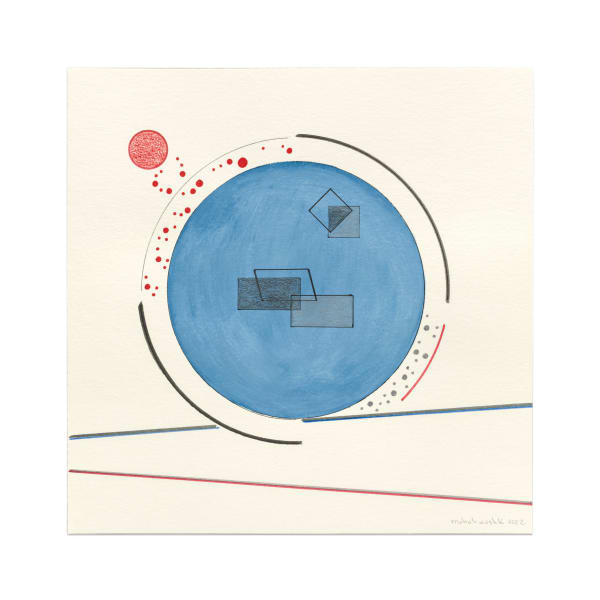-
-
Annick Tonti, who passed away last year after a short illness, created a concentrated body of work over an eight-year period. Working under the artist name, moholinushk, she engaged intensely with a world of forms influenced by Suprematism. A comprehensive monograph is being published alongside the exhibition.
Born in France in 1951, Annick Tonti grew up in an intellectual and multicultural family. She was fluent in several languages, including French, German, English, Arabic, Bengali, Italian, Korean, and Spanish. Her father was an architect, leading Tonti to develop an early interest in the concept of the "Gesamtkunstwerk" - a total work of art where the boundaries between fine and applied arts are blurred. From an early age Tonti was fascinated by design, material, and functionality, which seemed to point naturally to her studying architecture. However, she soon chose a different path, studying art history before moving on to social anthropology. Tonti's thinking was shaped by openness, exchange, and curiosity - values reflected in the many journeys she shared with her husband, Matti Weinberg. As a social anthropologist, Tonti spent much of her life advocating for others - until she decided to follow her own artistic path, which she pursued with great intensity for the last eight years of her life.
Tonti chose the unique pseudonym moholinushk - a respectful nod to the Hungarian artist László Moholy-Nagy, who was a key figure in shaping the Bauhaus in Weimar and Dessau. Her engagement with this period was rooted in her interest in an architecturally influenced perspective.
Tonti's work is distinguished by its juxtaposition between latent dynamism and subtle precision, creating a sense of calm in motion that has the power to deeply resonate with viewers. This is reflected in the titles of her pieces: works such as Visions of Japan and Separation clearly indicate Tonti's focus on movement and process. Many of her motifs feature a subtle interplay between converging and diverging forms and lines, alongside a restrained use of colour. Immersing oneself in Tonti's gentle formal language invites self-reflection and an awareness of one's own visions.
The monograph Annick Tonti moholinushk is published co-published by Hurtwood Books and moholinushk archive, featuring a foreword by Matti Weinberg (editor), texts by Rebecca Alcaraz and Bettina Diem, design by Jeannine Herrmann, and photography by Zoe Tempest.
-
View all available works
-
Monograph book launch
-
 Annick Tonti
Annick Tonti








